![]()
![]()
![]()
Use LEFT and RIGHT arrow keys to navigate between flashcards;
Use UP and DOWN arrow keys to flip the card;
H to show hint;
A reads text to speech;
21 Cards in this Set
- Front
- Back
|
Is simply the name given to tissue fluid that has entered the dead-end lymph capillaries found in tissue spaces: |
Lymph |
|
|
Encapsulated masses of lymphatic tissue found along the pathways of the larger lymph vessels, and lymph flows through them on its way back to the blood: |
Lymph nodes |
|
|
Are unencapsulated masses of lymphatic tissue found just beneath the epithelium of all mucous membranes: |
Lymph nodules |
|
|
Tissue fluid is made from: |
Blood plasma |
|
|
Lymph vessels from the lower body unite to form the ________ _____ (in front of the second lumbar vertebrae), which continues upward as the thoracic duct. |

Cisterna chyli |
|
|
Vessels from the upper left quadrant join the thoracic duct, and it empties lymph into the: |
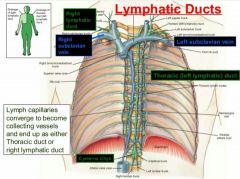
Left subclavian vein |
|
|
The upper right quadrant of the body is drained of lymph by vessels that form the right lymphatic duct, which empties into the: |
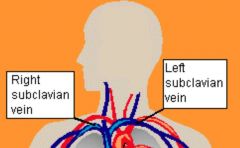
Right subclavian vein |
|
|
The lymph capillaries of the villi of the small intestine are ________; they absorb fat-soluble end products of digestion. |
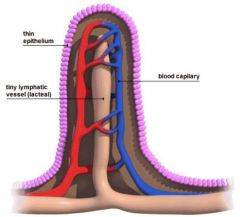
Lacteals |
|
|
The ________ tonsils are on either side of the oropharynx. |
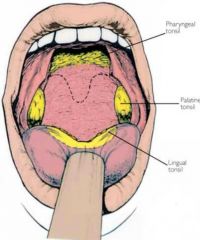
Palatine |
|
|
The __________ tonsil (adenoid) is on the posterior wall of the nasopharynx. |
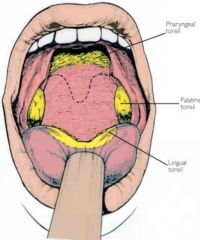
Pharyngeal |
|
|
The _______ tonsils are on the base of the tongue. |
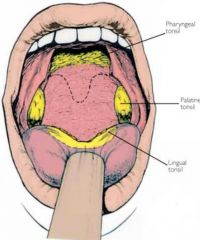
Lingual |
|
|
Lymph nodules of the small intestine: |
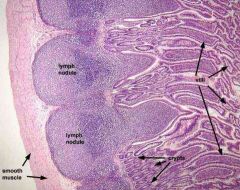
Peyer's patches |
|
|
The ______ _____ is located in the mediastinum beneath the sternum; it is large during fetal development and childhood, but shrinks thereafter. |
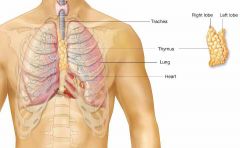
Thymus gland |
|
|
RBC graveyard: |
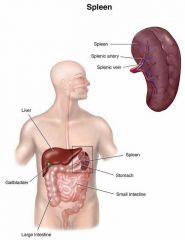
Spleen |
|
|
______ immunity refers to nonspecific defense mechanisms that come into play immediately or within hours of an antigen's appearance in the body. (These mechanisms include physical barriers such as skin, chemicals in the blood, and immune system cells that attack foreign cells in the body.) |
Innate |
|
|
________ immunity (acquired immunity) is very specific for each pathogen; its responses become more efficient with repeated exposures because it creates memory for pathogens. |
Adaptive |
|
|
____-________ immunity requires macrophages and helper T cells to recognize a foreign antigen. The activated T cell then divides many times to produce subsets: cytotoxic T cells and memory T cells. |
Cell-mediated |
|
|
Occurs upon recovery from a disease: |
Naturally acquired active immunity |
|
|
Involves transmission of antibodies from mother to fetus or infant, across placenta or in breast milk: |
Naturally acquired passive immunity |
|
|
Involves a vaccine that stimulates antibody production: |
Artificially acquired active immunity |
|
|
Involves injection of preformed antibodies after exposure to a pathogen: |
Artificially acquired passive immunity |

